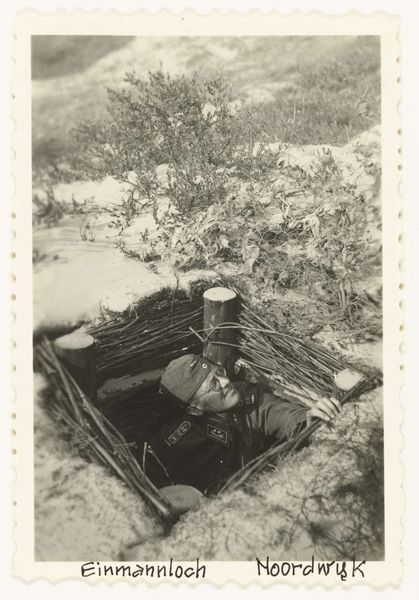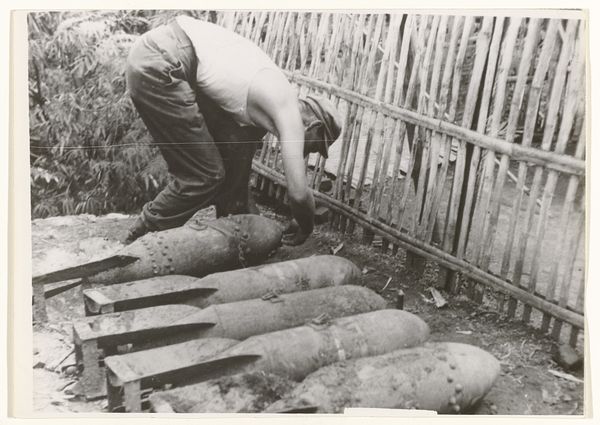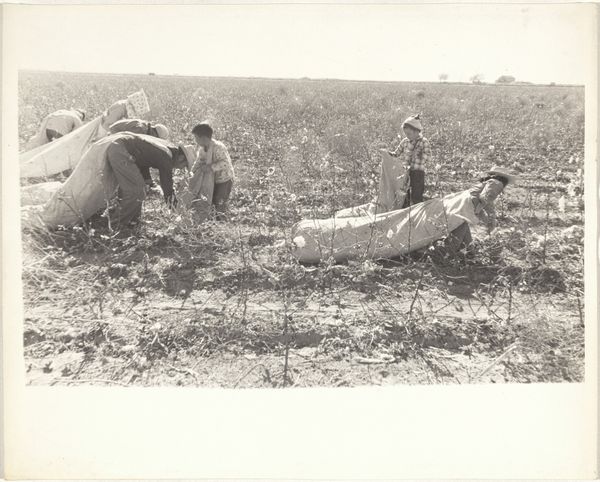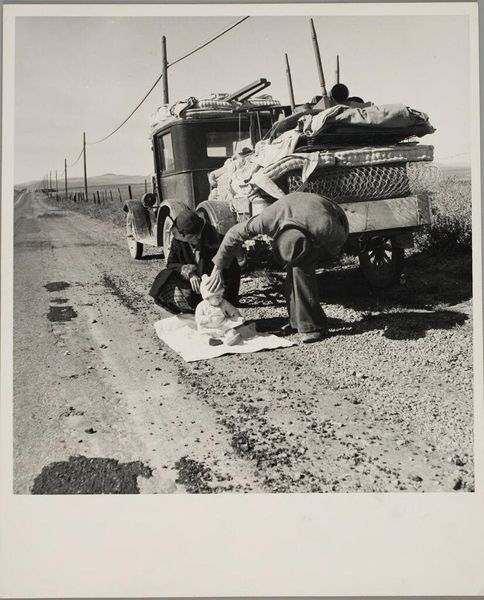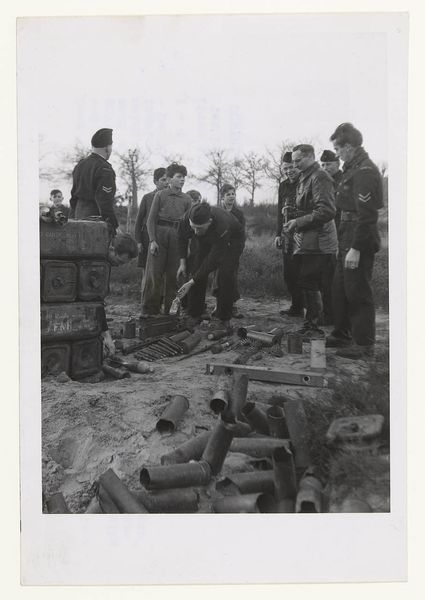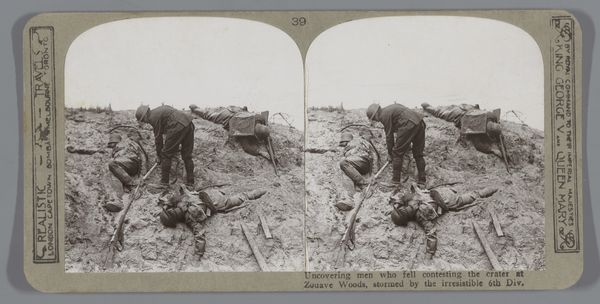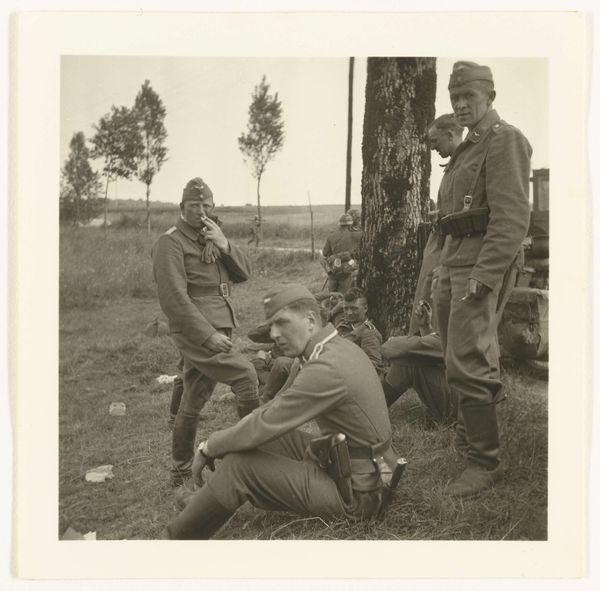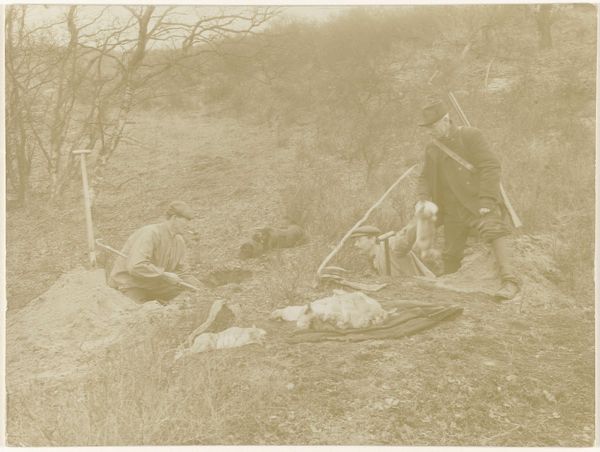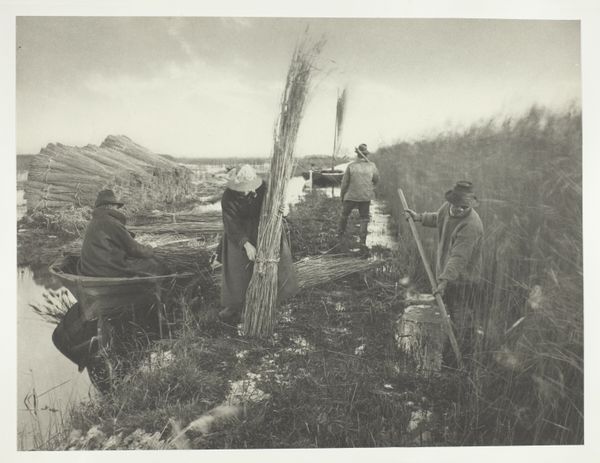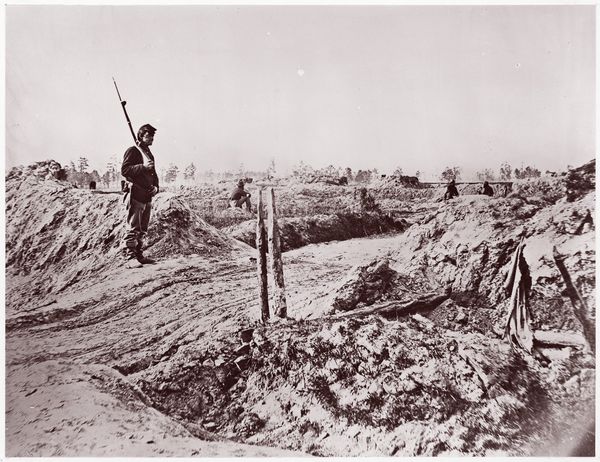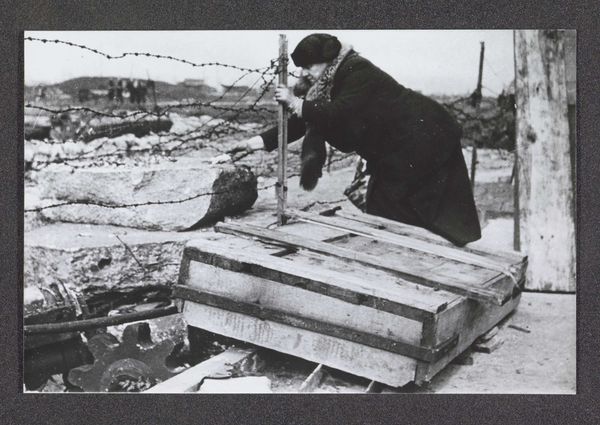
photography
#
portrait
#
landscape
#
street-photography
#
photography
#
realism
Dimensions: height 5 cm, width 5 cm
Copyright: Rijks Museum: Open Domain
Curator: Welcome. Here at the Rijksmuseum, we're delighted to present David Ketel's 1952 photograph, "Russisch offensief". It captures a seemingly mundane scene of two soldiers against an earthen backdrop. What's your immediate impression? Editor: Bleak, almost theatrical. The monochrome palette feels like a stage set for… what exactly? Stoicism, perhaps? The roughness of the excavated earth emphasizes human intervention and its relationship with landscape. Curator: Indeed, Ketel’s technique amplifies that. Note the almost brutal, unflinching realism in the portrayal of their fatigues. The dirt underfoot speaks volumes about the labor, and even more, the setting. There is an interesting dynamic to the relationship between the uniforms they wear and the raw conditions surrounding them. Editor: Symbolically, though, aren't these soldiers more than just laborers? The man leaning into the dugout - his actions are shielded by makeshift coverings - reminds me of early Christian images of figures entering crypts. Is it a reference to entombment or, potentially, rebirth, or some deeper metaphor for retreat or strategic withdrawal? Curator: Fascinating perspective. I'd argue Ketel is grounding us more in the physical. Consider the means: this image captured via photographic processes—chemicals, lenses—converted tangible reality to this very material object we now analyze. The grainy texture emphasizes the work involved: building, digging, persevering. It speaks to both a certain immediacy and documentary power in recording human endeavors during a tense historical moment. Editor: But 'Russisch offensief'? It feels more allusive than descriptive, invoking tension and fear. Aren’t these men participating in something beyond just digging a hole? The title charges even mundane actions with broader significance. The man looking directly at the camera also intrigues, he holds some degree of control of our reading of the narrative. Curator: I can agree to some extent. The artist does not only show physical engagement but also uses symbolism to show something bigger is at play. I still feel the material itself pushes beyond pure symbolic meaning here—the chemicals, the paper and photographic production technology all root it firmly in a physical world undergoing significant ideological struggles. Editor: That focus on process is compelling. So, we see both the dirt and the dream, labor and symbolic resonance, intertwined. Curator: A balanced perspective indeed. I leave with a renewed appreciation for how this artwork showcases materiality and meaning in one frozen moment. Editor: And I, contemplating how cultural anxieties can seep into the most unassuming of images.
Comments
No comments
Be the first to comment and join the conversation on the ultimate creative platform.
